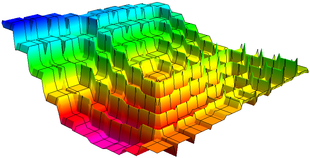10-327/Classnotes for Thursday November 25: Difference between revisions
No edit summary |
No edit summary |
||
| (One intermediate revision by one other user not shown) | |||
| Line 18: | Line 18: | ||
-Kai |
-Kai |
||
Kai - your question is too open-ended to have an answer that fits in a few minutes of typing, so I'd rather answer it in person, if you come to my office hours. [[User:Drorbn|Drorbn]] 16:39, 6 December 2010 (EST) |
|||
-Picture |
|||
One picture summary of what you should know about regular/completely regular/normal/completely normal spaces. -Kai[[User:Xwbdsb|Xwbdsb]] 07:59, 19 December 2010 (EST) |
|||
http://katlas.math.toronto.edu/drorbn/index.php?title=Image:10-327_review.JPG |
|||
Latest revision as of 07:59, 19 December 2010
| ||||||||||||||||||||||||||||||||||||||||||||||||||||||||||||
See some blackboard shots at BBS/10_327-101125-142103.jpg.
| Dror's notes above / Student's notes below |
Here is a lecture note for today:
Question
Question. The first half of Tietze's theorem isn't very surprising as a limiting process of approximations. But the second half is just like a magic? I don't understand what has been implicitly used here. The "boundedness" property only depends on the metric we define on a set and it does not have anything to do with topology. We are linking R with (-1,1) with a homeomorphism which is completely not metric-related. And suddenly all the unbounded cts functions all become bounded cts functions?......What has been used here? Did we implicitly redefined the metric? Why it works out so smoothly just like a magic trick?...
-Kai
Kai - your question is too open-ended to have an answer that fits in a few minutes of typing, so I'd rather answer it in person, if you come to my office hours. Drorbn 16:39, 6 December 2010 (EST)
-Picture
One picture summary of what you should know about regular/completely regular/normal/completely normal spaces. -KaiXwbdsb 07:59, 19 December 2010 (EST) http://katlas.math.toronto.edu/drorbn/index.php?title=Image:10-327_review.JPG

![{\displaystyle [0,1]}](https://wikimedia.org/api/rest_v1/media/math/render/svg/738f7d23bb2d9642bab520020873cccbef49768d)



